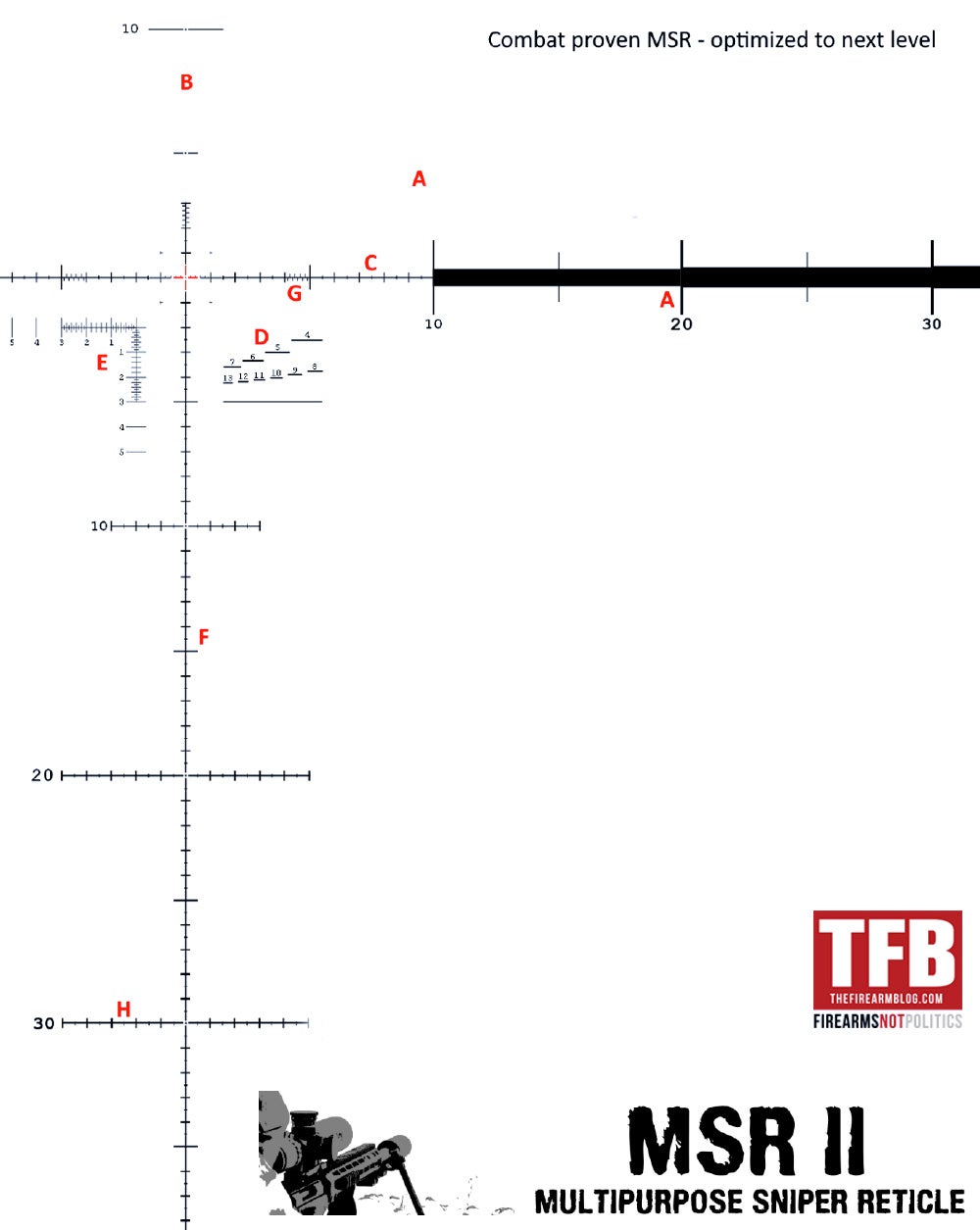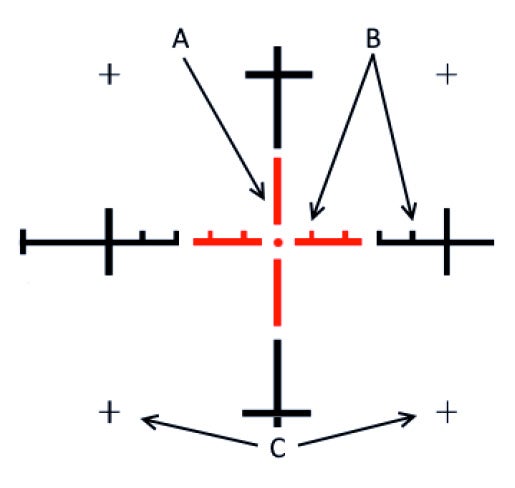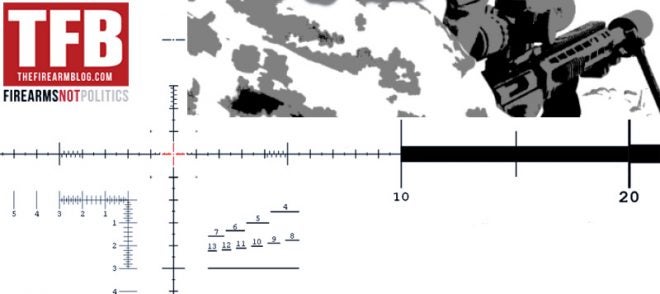For a while, I’ve known that something was going on in terms of a new reticle, and I was guessing that SHOT Show 2018 might be the time when it was going to be released.
It’s therefore with great pride we can present the new MSRII reticle from Finnaccuracy. To our knowledge Snipershide and Finnaccuracy’s own blog are the only ones with this press release at this time.
You may argure – what’s the news about? Just another reticle? I only need a red dot to hit my targets!
Well, take a closer look at the MSRII and see what you think. You can compare it to the current MST (Gen 4) here. It’s a pretty clever system enjoyed by a lot of long range shooters, and with the MSRII we’ll be able to take more advantage of current and upcoming super-zoom optics.
I hope in 2018 I’ll be able to invest in a Schmidt & Bender 5-45×56 High Power with the MSRII, but I may have to settle for a 5-25×56 PMII.
If you have the possibility you can see the reticles in person in either Steiner’s or Schmidt & Bender’s booth at SHOT Show 2018.
In the first phase the MSR2 will be available in the Steiner M5Xi series and also Schmidt & Bender’s 3-20 Ultra, 5-25, 3-27 and 5-45.
Below: Steiner M5Xi Military 5-25×56

The S&B 3-27 is a nice scope, but rather expensive (aren’t they all?). For the S&B 3-27 the MSR2 will be slightly different compared to other models. This is related to etching limitations that happen to be restricting in the 3-27 only.
Below: The Schmidt & Bender 3-27×56 PM II High Power, developed as part of a USSOCOM request for proposal for shooting at extremely distant targets.

Expect other suppliers to follow with the MSR2.
The below text is from Finnaccuracy’s press release:
“MSR2 key features
– Proven MSR look and feel – with more features
– Aiming usability starting from the lowest magnification and very close ranges. Heavy bar scaling offer close-range aiming reference
– Clear traditional feel in mid-range 10…15x magnifications. Details needed for finest precision available in 20x and above
– Numbered bars and hashmarks for general observing down to very lowest magnifications: scale in both horizontal and vertical axis
– Center cross area optimized to highest magnification powers – center cross hashmarks and dot offer precision without distraction
– Modern FFP scope large variation of apparent reticle size exploited: a truly functional multipurpose reticle trough whole magnification range
– Optimized functionality out to ultra-long shooting distances
– Dimensions checked and optimized to each scope model magnification range
History & Background
The original MSR concept was released in 2009. The idea for this reticle was born from the needs of long-range field shooters.
Guidelines for the concept were practicality, versatility and accuracy within the footprint of modern sniper rifles systems.
The principles are also valid and carry over to many sport shooters and hunters – those who appreciate and need practical usable precision in any situation and all conditions. The original design team was put together by FinnAccuracy, and consisted of various types of experienced professionals, active and retired military, Law Enforcement Officers and competitive long range shooters.
Many – if not all – members of the design team were also passionate hunters at the same time, so design was considered from all possible perspectives.
Now, after many successful years from that original release, MSR2 features are updated and optimized to match or exceed even the most demanding modern needs. Since its original inception there have been many advances, and many things have changed within the shooting world. Scope magnification ratios have increased just to mention one – but also the general knowledge among advanced scoped rifle users has improved in big leaps. The original MSR key points were a clean overall look with separate areas for precise but simple multitasking. Some of the features in MSR2 were envisaged for the original MSR design, but were intentionally not added to it.
Below: The Schmidt & Bender 5-45×56 PM II High Power, now with MSR2.

New version
MSR2 has several new features, yet with further development of original design features, all carefully benchmarked and fine-tuned for the most optimized usability. Dozens of test combinations were used in the development phase, some have been incorporated into final prototype scopes for further evaluation and final analysis. Countless individual aspects had to be considered in design and development, especially line or object weight balancing which is always difficult with any reticle.
This was a particularly sensitive issue with MSR2 where optimization had to be balanced uniquely for various types of use, and design had to perform with several magnifications. In some applications, MSR2 also requires and takes advantage of the latest reticle lens etching technology that was not available during the original MSR development.
Magnification ranges
The reticle can now be used at very low magnification powers starting from 3…5x for spotting and general observing, whilst still be used at these powers for very close range and rapid aiming situations.
Midrange magnifications from 10…15x offer the very traditional 1/0.5mrad deviation feel for any shooting where larger FOV or simple classic look is needed. In heavy mirage or with moving targets, for instance.
The stadimetric 400m-1300m instant ranging scale becomes more usable starting from this power range. Several additional aiming references for ELR/ULR also available due to relatively large FOV.
From 15…20x power and up, the smaller center area details for long range precision appear and become visible. The center cross has added hashmarks, as well as very fine surrounding alignment crosses whilst still keeping the clean and simple overall feel without any unnecessary distraction.
For magnification above 25x, FOV limits the usage to the center area of the reticle. The illuminated center cross has 0.2mrad deviation hashmarks in the horizontal axis. These marks were kept light to keep the center area as clean as possible while still offering functionality with new aiming references. The reticle 0.04mrad hairline thickness in 5-25x scope class can be considered to be slightly on the thick side, but the incorporation of a center aiming dot enables aiming at even the smallest and most distant target.
The center aiming dot was considered for the original MSR design, but it seemed too radical for such a new design concept back then. However now with scope magnifications up to 35x and even more, this feature guarantees precise aiming in any situation. MSR2 incorporates design features which are particular functionality extension to extremely long shooting distances.
After almost 2-years on the project, we are confident and happy to assure anyone that nothing was lost from the original idea.
The New MSR2 is still simple, versatile and efficient – but now with detailed precision and extended usability for those who appreciate more.”
Below: Parts of the MSRII reticle. It’s virtually impossible to show the reticle, as in full size it becomes larger than an A4 on paper. This picture gives you an idea, with an explanation below.

Explanation to the letters in RED above.
A Stepped scaling for large magnification scopes. Numbered hashmark lines in 10mrad division. Improved visibility for team communication and target acquisition. Heavy bars also offer sensible close range aiming reference in the center-FOV for very low magnifications
B Removed upper vertical hairline for clean upper part FOV – used for spotting or general observing. Dotted hashmark lines in 10mrad division for target acquisition. Can also be used as precise aiming references for ELR/ULR shooting when scope needs to be zeroed on the upper part of FOV
C Widened center hairline for cleaner FOV on high and mid- magnifications. Center area line thickness 0.04mrad (1). Carefully balanced 1mrad hashmark lines are wider, providing classic dominant feel and clarity – 0.5mrad lighter hashmarks still clearly standing out as soon as eye focuses on them.
D Compact and high-visibility ranging stadia from 400m to 1300m for instant range estimation. Calibrated for 50cm/19.5″ wide and 100cm/39″ tall object. Dimensions match perfectly to shoulder width and crotch-top of head distance but are also very close to many commonly used steel/paper targets.
E Original Finnaccuracy “inverted milling L”. All targets between 7mrad and 0.1mrad size can still be measured as precisely, as with the original design – less stadia lines provide more overall clarity in the FOV. Scale is kept near to center FOV for maximum resolution. Line thickness 0.02mrad.
F Vertical hairline under center-cross with stepped weight: 0.05mrad and 0.06mrad below 10mrad and the 20mrad horizontal lines. (1) Improved hairline visibility for ELR/ULR shooting where wide FOV and large amount of direct hold-over is needed.
G 0.1mrad stadia lines added to support “L” scale for situations where heavier line weight with more contrast is needed. Earlier MSR had 0.2mrad deviation marks, the new additional lines on the opposite side offers the possibility to measure odd 0.1, 0.3, 0.5 … dimensions as well.
H Vertical lower hairlines for ELR/ULR distance hold-over aiming. Stepped thicker line weight and number size on lower part offer visibility for lower zoom / wide FOV magnifications. 10mrad division numbering also practical for general spotting purposes and team communication.
Please note that the reticle design may differ a little bit between manufacturers.
Below: The center cross, enlarged. See below for explanation.

A The compact 1x1mrad center illuminated area for minimal interference at twilight performance. The center 0.5mrad lines in each direction can also be illuminated for daytime use, to emphasize it for dimensional reference. The center cross illuminated area can also be used as simple memorized ranging scale as with original MSR.
B 0.2mrad deviation hashmarks in center area vertical line – kept compact for maximum center area clarity.Hashmarks still clearly visible starting at mid- magnification ratios
C Additional very fine “+” marks around center cross are alignment references for near-hit impacts – fast and precise shot correction in situations where target surrounding does not offer any distinguishable points. Marks can also be used as fine aiming reference by shifting zero
1+1mrad with turrets to any direction from center
You can see videos of the current MSR system and how it works here. There’s another good video here from T. Haugland.
Another picture of the MSR2 reticle.

UPDATED: January 2020: If you have a deeper interest, please check the 2,1Mb pdf instruction for the MSR2 reticle.
Looking forward to your comments on the MSRII reticle. What do you think? Will it make you change your current scope?
 Your Privacy Choices
Your Privacy Choices
